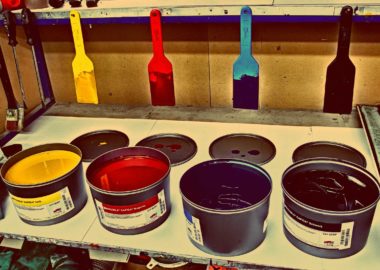
In January, ECHO Storytelling Agency published What Digital Storytelling in 2016 Will Look Like, and we don’t mind saying our own Taryn Hardes was pretty spot on. But even she couldn’t predict the specific forms this cutting-edge content would take. So, with just over a third of 2016 remaining, we’ll review the year’s most innovative digital storytelling in Taryn’s prediction categories. After all, soon it will be time to look ahead to 2017.
1. Live Updates: Facebook Live
As predicted, “live” went mainstream in 2016. And the breakout success is Facebook Live. Launched on April 6, it allows anyone to broadcast to Facebook’s 1.7 billion users. Similar live broadcasts were already possible on Periscope, Meerkat and more, but those platforms lacked Facebook’s reach. The results have been astounding. The current top video features the now world-famous “Chewbacca Lady” laughing her mask off in a Texas parking lot, but Facebook Live also is playing a growing role in exposing police misconduct and in broadcasting US politics, including June’s congressional sit-in and July’s RNC and DNC conventions .
2. Video: Virtual Reality at Comic-Con
Taryn’s predictions correctly focused on social media but video storytelling found another 2016 growth area in virtual reality (VR). While consumer VR awaits a killer app (augmented reality caught one first), there is great, untapped public interest in trying out the tech. Savvy marketers are using VR demos to promote content on other platforms. Nowhere was this more evident than at San Diego’s Comic-Con this July, including Mr. Robot VR by USA Network. It’s a digital narrative prequel to the show’s hit first season. Created by showrunner Sam Esmail and starring the show’s cast, it allows viewers to take a closer look at scenes that have captured their imaginations. We expect marketers to continue touring VR versions of content they hope you’ll tune in for elsewhere until there are headsets in more homes. For those ready to go, Mr. Robot VR is now available for download worldwide.
3. Messaging: CNN’s Chatbots
It’s no secret we increasingly seek private digital experiences, even on social media. It’s part of why Snapchat, the self-destructing messages app, is so popular. This trend, combined with advancements in artificial intelligence, has led to renewed interest in chatbots — virtual assistants that answer questions and perform services via text. No company has embraced the wave like CNN. Currently, they have chatbots available on three platforms: Facebook Messenger, the image-based LINE, and Kik — a Canadian-born platform popular with the under-20 set. There have been some struggles, but CNN is gaining valuable insight along the way. The Kik bot is particularly interesting. It’s designed to answer basic questions a pre-teen might have about news and geopolitics, a hopeful sign CNN is considering the next generation of potential newshounds.
4. Podcasts: 2016 Election Coverage
Many expected podcasts to break out in 2016. Indeed, polls show this is happening. With 1-in-5 American adults now listening regularly, though, it still may not quite represent a mass audience. But the listeners are disproportionately young, affluent, and tech-aware – a marketer’s dream. One key to reaching them is providing useful long-form analysis of complex issues. And no recent event has generated as much interest, discussion and banging-heads-against-walls as the American presidential election. Aside from existing political podcasts that have performed ably, others have sprung up to serve this audience. Some of the most popular include FiveThirtyEight Elections, Keepin’ It 1600 by The Ringer, Slate’s Trumpcast, and Politico’s 2016 Nerdcast.
The Best of The Rest
There were two other predictions in Taryn’s post. Regarding app extensions: we’d point to the release of Snapchat Memories and Instagram Stories. Who would have guessed that in 2016 some of the biggest developments in major apps would be flattening uniqueness and overlapping functionality? And as for distributed content for digital storytelling? It’s as important as ever. That’s why we urge you to consider all of the above formats and platforms as part of your content distribution plan.
Want more information or assistance with implementing digital storytelling of any kind? Contact us.





